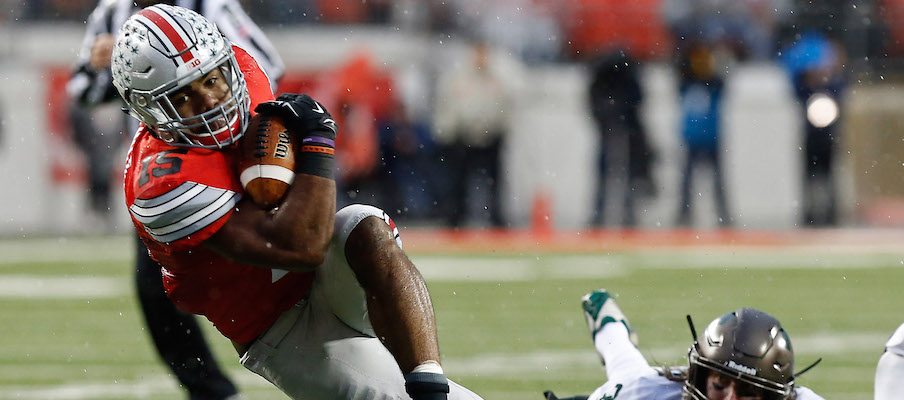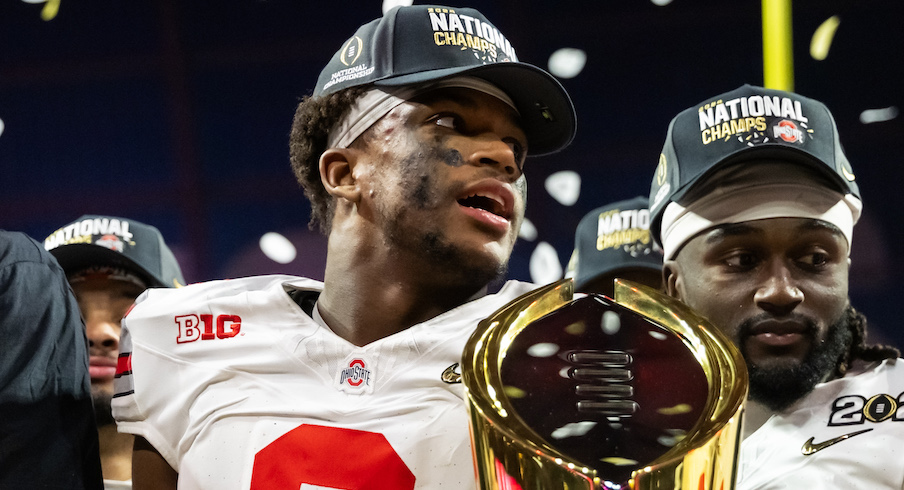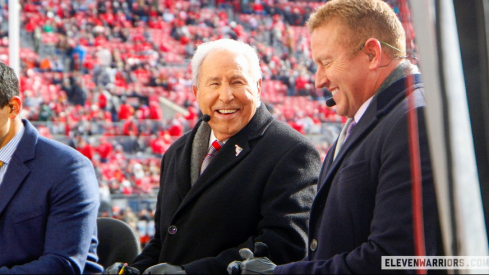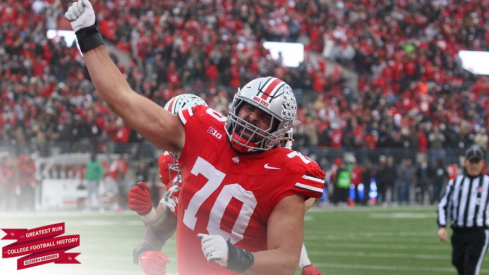Ohio State has far fewer returning starters for the 2025 season than it did the last two times it was the defending national champion.
After winning the first-ever College Football Playoff title in 2014, Ohio State brought back 15 of its primary starters for the 2015 season. After winning the BCS national championship in 2002, Ohio State brought back 13 of its primary starters for the 2003 season.
Ohio State’s 2025 lineup, on the other hand, will include just seven players who started a majority of its games in 2024. The Buckeyes have to replace 17 players who played major roles for them this past season, 15 of whom were invited to the NFL Scouting Combine as projected draft picks.
The Buckeyes would surely love to have more of their key contributors from their run through the first-ever 12-team College Football Playoff back for another season. Yet the results of Ohio State’s past title-defending teams who brought back most of their starters from their title-winning seasons show that wouldn’t have guaranteed success – at least not at a championship level.
And it’s well within the realm of possibility that the 2025 Buckeyes could outperform Ohio State’s previous teams that were defending national championships, in large part thanks to the ways college football has changed since the last time Ohio State was defending a national title.
Ohio State entered the 2015 season with as much hype as it’s ever had to enter a season – at least until this past season – as it returned a majority of its top stars from 2014 including Ezekiel Elliott, Joey Bosa, Michael Thomas, Taylor Decker, Eli Apple, Vonn Bell, Darron Lee and the quarterback duo of J.T. Barrett and Cardale Jones, among others. Yet the 2015 Buckeyes looked burdened by the weight of those expectations all year long, struggling to beat several unranked opponents before suffering a 17-14 loss to Michigan State that kept them out of the Big Ten Championship Game and CFP.

The 2003 season looked similarly primed for a potential repeat championship as those Buckeyes also had a multitude of returning stars like Chris Gamble, Will Smith, Michael Jenkins and quarterback Craig Krenzel, among others. Despite having a school-record (at least for the next two months) 14 players who would go on to be selected in the 2004 NFL draft, those Buckeyes also fell short of expectations, losing two regular-season games to Wisconsin and Michigan while struggling to beat several other opponents along the way.
| Year | Record | Final Rank |
|---|---|---|
| 2015 | 12-1 | 4 |
| 2003 | 11-2 | 4 |
| 1971 | 6-4 | NR |
| 1969 | 8-1 | 4 |
| 1962 | 6-3 | 13 |
| 1958 | 6-1-2 | 8 |
| 1955 | 7-2 | 5 |
| 1943 | 3-6 | NR |
In terms of claimed national championships, the closest Ohio State has ever come to repeating was in 1969, another team that entered the season with enormous expectations as the “Super Sophomores” who led the Buckeyes to a national championship in 1968 became juniors. Yet that team also came up short in the end, suffering a 24-12 loss to Michigan in its regular-season finale after dominating its competition for the rest of the year.
That’s not to say that past Ohio State championship teams who had more roster turnover fared better. After the star-studded senior class bounced back from its 1969 heartbreak to win another national championship in 1970, Ohio State went just 6-4 in 1971 as it returned only four starters from the year before. That could serve as a warning for the challenge that lies ahead for the 2025 Buckeyes (as could Michigan’s dropoff last season – at least until it played Ohio State – after it lost 18 starters from its 2023 national championship team).
But the 2025 Buckeyes have a couple of benefits that none of their previous national championship-defending teams did.
For one, Ohio State has the benefit now of being able to add transfers who can play immediately, which helps mitigate the amount of experience it lost from last season. While Ohio State has only seven returning starters, it added transfers like former Purdue tight end Max Klare, former Rice offensive tackle Ethan Onianwa, former West Virginia running back CJ Donaldson, former Minnesota offensive tackle Phillip Daniels and former Idaho State defensive end Logan George who bring starting experience from elsewhere and have the potential to be immediate-impact players for the Buckeyes.
Add those players to a lineup that will still include Ohio State’s two biggest stars from this past season – Jeremiah Smith and Caleb Downs – as well as Sonny Styles, Davison Igbinosun, Carnell Tate, Tegra Tshabola and Carson Hinzman as returning starters, and suddenly the exodus of talent doesn’t look quite as daunting.
Secondly, the Buckeyes could benefit in a big way from the same 12-team CFP format that enabled them to win the national championship this past season.
Realistically, some growing pains should be expected from Ohio State in 2025 as it will be relying on many new faces to play major roles, including a first-time starter at quarterback. But the Buckeyes could lose a couple of games during the regular season and still make the playoff – just as they did this past season – and Ohio State still has more than enough talent to develop into a championship-caliber team by the end of the year.
Had the playoff been 12 teams back in 2015, it’s certainly possible that Ohio State would have made a run at the championship that year; after that loss to Michigan State in the 11th game of the season, those Buckeyes finally looked like the team they were supposed to be all year in their final two games of the year, beating Michigan 42-13 in their regular-season finale and Notre Dame 44-28 in the Fiesta Bowl. Conversely, the 2024 Buckeyes and all of their returning talent would have surpassed the 2015 Buckeyes as Ohio State’s most disappointing team in recent history if the playoff had remained at only four teams.
Repeating as national champions is never easy, as evidenced by the fact that only four teams have done it in the last 40 years (Nebraska in 1994-95, USC in 2003-04, Alabama in 2011-12 and Georgia in 2021-22). The fact that the past Ohio State teams who seemed built to go back-to-back all came up short only underscores the difficulty of the task the 2025 Buckeyes will be trying to accomplish.
Yet there’s still plenty of confidence in Ohio State’s ability to win it all again; the Buckeyes are currently the preseason favorite to win it all on both DraftKings (+500) and FanDuel (+600). The fact that many of Ohio State’s key players in 2025 will be players that didn’t play major roles in 2024 – or weren’t with the team at all – will only add to their motivation to bring another title back to Columbus. And Ryan Day is already projecting public belief that his team can contend for another championship despite its many departures.
“We got a really good group of guys coming back. I mean, really good group of guys coming back,” Day said during a recent interview on The Joel Klatt Show. “It's exciting.”


